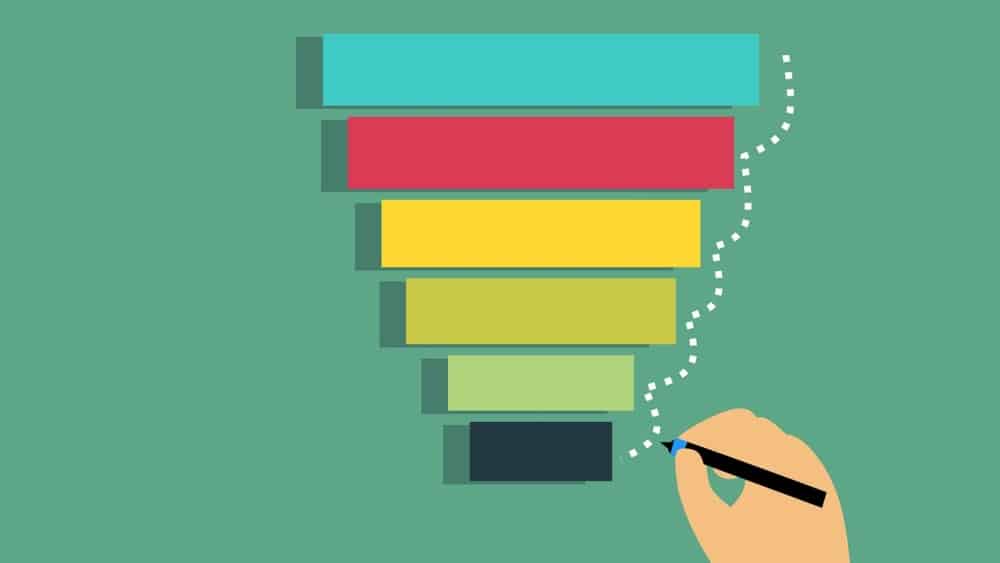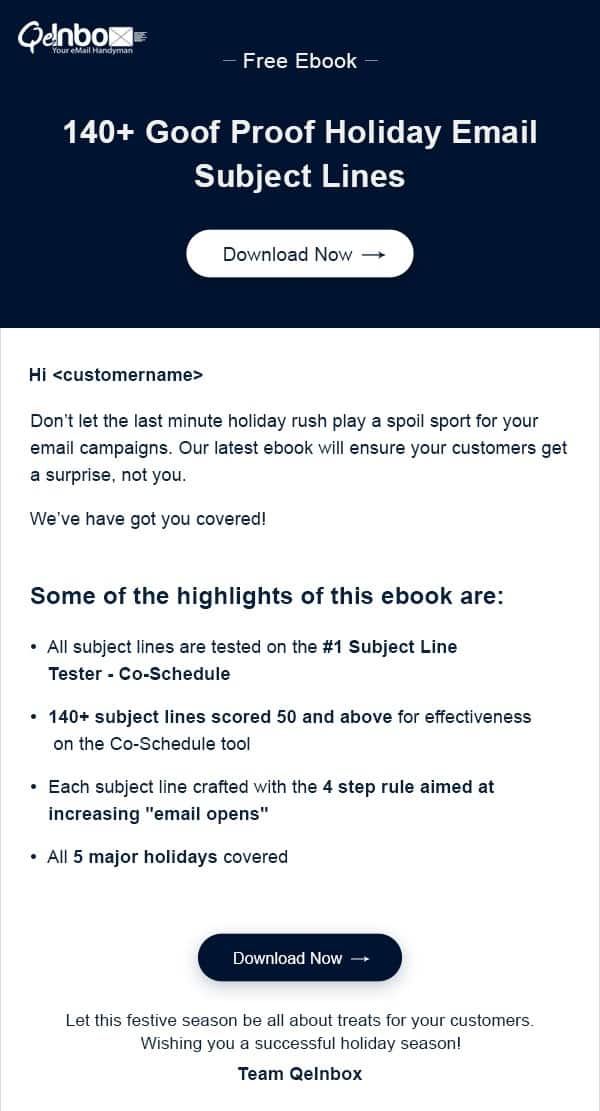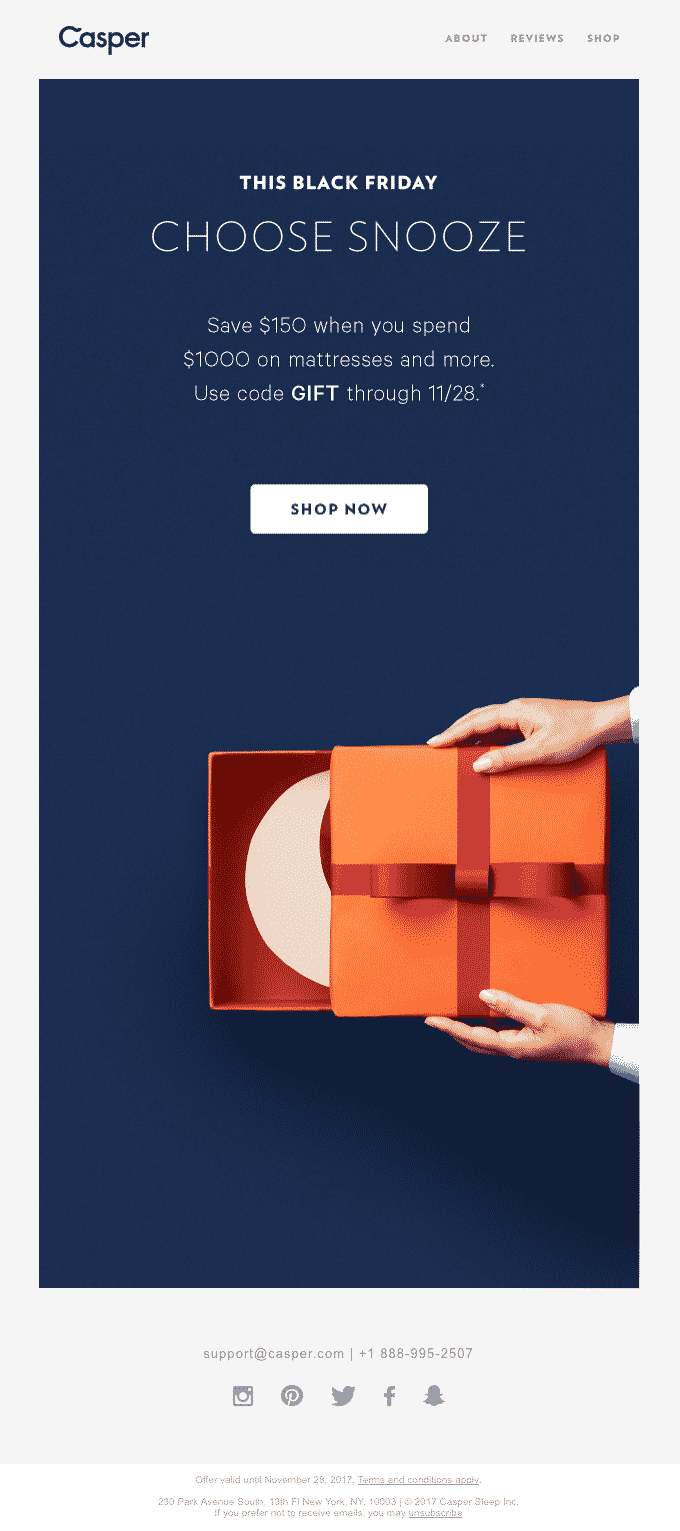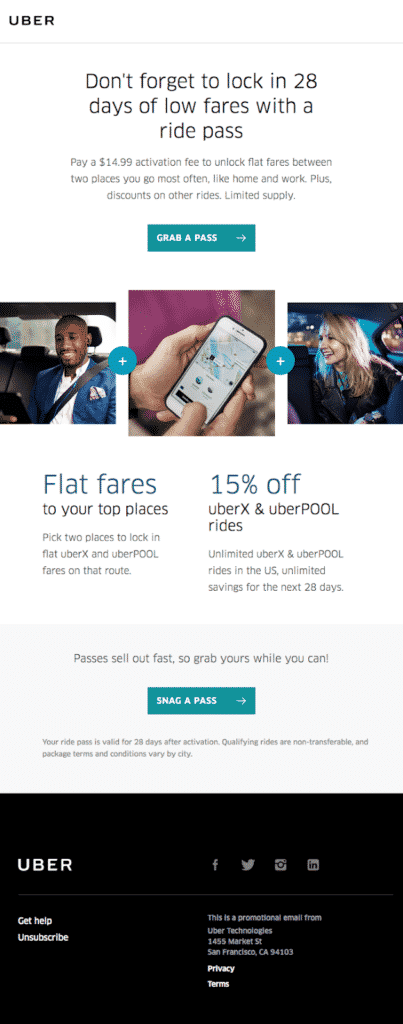This article has been contributed by Annie Geller.
Email marketing is an invaluable weapon in your digital marketing arsenal.

Marketers say it is the most preferred channel for business communications, and to back this fact up, we have a small statistic that makes a huge impact. The Litmus research showed a massive $42 return on investment for every single dollar spent on email marketing in 2019, which was up from $38 in 2018.
Like every other sales funnel, the ultimate goal for marketing emails is conversions! Marketers send emails because they’re expected by the customers. Social media may have penetrated the online business industry as a quick response marketing channel, but the email space is still unshaken. MailChimp’s latest ‘Year in Review’ reported 839.5 million eCommerce orders generated solely via emails.
The numbers speak for themselves! If you haven’t added email marketing to your digital marketing strategy yet, you’re missing out on a huge amount of revenue.
In this article, we’ll guide you on how to build an email funnel that can help you generate conversions. Before jumping into it, let’s begin with getting acquainted with the different stages of an email funnel first.
Stages in an Email Funnel
Potential customers in a brand’s sales cycle have to pass through different stages where the email communication changes according to their current stage. While the exact number of stages to pass through depends on the marketer’s choice, an email funnel can generally be divided into 5 major stages.
- Awareness
- Consideration
- Conversion
- Loyalty
- Advocacy
The stages of the email marketing funnel refer to the degree of how likely the subscribers are willing to complete a purchase. When, or more precisely if, the prospect reaches the final stage of your email funnel, the chance of them becoming a customer increase.
Not everyone who enters the funnel ends up as a customer. Some may lose interest in the process, and some might end up becoming your recurring customers. Thankfully, those dropping out before converting are not entirely lost. They can be re-engaged with special emails aptly titled re-engagement emails (discussed later).
Let us start studying each step of the funnel in detail.
1. Awareness
The first step at the top of the email funnel is Awareness. It’s a necessity to be seen to be bought! Brands need to establish their presence in the eyes of their users.
The awareness stage is triggered by a range of marketing activities, such as:
- Organic search
- Website blogs
- Social media
- PPC, and more
At this stage, they are only aware of your brand’s existence and they may be interested in exploring your products or services. Hence, you need to introduce your business to your visitors and work on capturing their email address for future correspondence, which we call lead generation.
The best method to capture leads is by offering free value at the first interaction, often via:
- Downloadable resources
- Whitepapers
- Discount and sale offers
- Freebies, and more
This allows your prospects to experience what it’s like to do business with your brand. Plus, it helps you establish a positive customer relationship.
When a visitor provides their email address in exchange for value addition, it is an indication that they are interested in learning more.
The emails you send during this stage should introduce your brand to prospects and collect information about them. These may be:
- Welcome email
- Complete your profile emails
- Connect on social media emails
- Free resources emails
2. Consideration
Once the formal meet-and-greet is complete, your prospects progress to the next stage where they will consider the pros and cons of giving business to you. This means you need to understand their goals, background and interests. You should then use this information to recommend suitable solutions for them to solve their problems.
You can do so with targeted content, personalized to what attracted your subscribers in the first place. According to Adestra, 82 percent of marketers reported an increase in open rates through email personalization, while 75 percent yielded higher click-through rates. The goal at the middle of your funnel is to work with your leads to figure out what exactly they’re looking for.
This stage of your marketing funnel consists of timely follow-ups to nurture your leads and engage customers. Some of the emails you send in this stage are:
- Email newsletters
- Case studies
- How-to articles
- Webinar reminders
Apply various touchpoints that can help move your customers along your marketing funnel. Always remember to have a clear call to action (CTA) after each touchpoint so your leads know what the next steps are.
3. Conversion
Now that you have nurtured your subscribers, they are now towards the bottom of the funnel and considered sales qualified leads (SQLs). Now it’s time for them to jump from the fence they are on and become a customer, so your email should give them the push they need to make that jump.
Subscribers are now more likely to want to hear how your product/service will help them. Focus on what differentiates you from your competitors. Share existing customer reviews, benefits, and explain the use of your product (embedded videos can be useful for this).
At this stage your emails should include messaging and CTAs such as:
- Try today
- Join us now
- Buy online
- Register now
- Get started
- Sign up forms, and more
The emails you send at this stage can be:
- Trial offers
- Promotional incentives
- Service comparisons
- Customer testimonials
4. Loyalty
The relationship never ends once you convert your leads into customers. Nurturing your new customers must always be an ongoing activity for your business. It promotes customer loyalty to your brand and therefore increases your business’s customer lifetime value.
Make sure to send your customers useful and relevant email content to enhance their experience of your brand. Send them emails such as:
- Re-order reminder
- Subscription renewal reminder
- Anniversary or birthday promotions
- Offers via a loyalty program
5. Advocacy
Advocacy happens when your customers become something more than customers. They become fans who do word of mouth marketing for you.
During this stage, focus on gaining insights from your satisfied customers. It’s important to gather feedback to improve your product and services.
Loyal customers promote on your behalf to their network, expanding your business reach. To encourage advocacy of your brand to loyal customers, set up a customer delight system to reward them for their referrals.
Examples of Email Marketing By Funnel Stage
Most emails that reach subscribers’ inboxes have different purposes and therefore different conversion goals. A lead generation email may be considered converted when a subscriber fills the form it links to or registers for the seminar that is mentioned in it. Engagement and conversions depend entirely on the aim of your campaign.
Below are a few examples that brands should leverage to get the best outcomes out of their email marketing efforts. Let’s get started.
Awareness Stage – Initial Engagement Emails
Welcome emails have the highest open rate and are 86% more effective than standard newsletters. These emails are often the most vital because they are essentially the first impression of your brand.
Welcome emails are mostly for gratifying and welcoming the subscribers on board. Establishing an initial connection with the subscriber followed by gathering their email frequency preferences is best practice.
Using the responses to welcome emails work like a charm when it comes to personalization! You get to familiarize yourself with your prospects and their preferences.
Segmentation, which is yet another unmissable aspect of email marketing, also gets better via the responses to initial engagement emails.
Take a look at the following welcome email from Whole Foods Market for a better idea of how to design an appealing template with captivating content for your very first email.
Awareness Stage – Lead Generation Emails
As mentioned earlier, all the funnel stages are not aimed at making direct sales. Lead generation emails are for collecting marketing qualified leads (MQLs). When brands run such email marketing campaigns, their goal is to gather relevant, qualified contact details from people who might be interested in their offerings.
Lead generation emails almost always offer value to the recipient. They hit the subscriber’s inbox with a free and resourceful offering like an important marketing insight, white paper, eBook download link, or a signup form for a seminar or webinar.
The email will open with the valuable resource. Then comes the part where the reader signs up or downloads the offering by providing their contact details. These emails require a lot of effort to come up with genuinely interesting offerings, which subscribers will be willing to trade their personal details for.
QeInbox, an email marketing service specialist, designed an eBook with holiday-specific subject lines to offer to their subscribers right before the holiday season to help them increase their email open rates and conversions. Brands planning for holiday email campaigns can make the most out of these free, click-worthy subject lines, promoted via the following lead generation newsletter.
Consideration Stage – Customer Engagement Emails
The second major stage of the email marketing funnel is all about addressing your prospects’ needs and getting them to click on what you’re offering.
Customer engagement emails are standard, more frequent, and informative emails. Email newsletters, product launch emails, festive greetings and other informative content that you offer to your subscribers are all the parts of the consideration stage.
At this point, being a brand, you already know the kind of preferences that your subscribers have signed up for. Hit them up with relevant, informative and segmented emails for better engagement.
If you’re not utilizing the type of content that your subscribers are demanding, you’ll end up losing them from your email list. Always make sure you maintain the consistency and frequency opted by them in order to retain them.
This stage, in most cases, ends when the action of landing on a newly launched product page or new feature page has occurred. This type of action should trigger emails for the next stage – conversion.
Here’s an example from Avocode for inspiration.
Conversion Stage – Direct Sales Emails
Some brands skip the other stages of the funnel and always tend to use direct sales emails, profiling their products non-stop. eCommerce stores, for example, keep their products in focus for their subscribers to know about their features, quality and description. When there’s a sale on, or a special periodic discount coming up (hint – Black Friday, Cyber Monday), direct sales emails introduce the subscribers to those offers and make their shopping experience hassle-free and fast.
These emails are designed for direct sales that encourage conversions! Consider the following examples of emails for the conversion stage of the funnel.

Other Valuable Email Examples for Marketers
Re-engagement Emails
Re-engagement, as the name suggests, are emails used to win back the almost lost or non-engaging subscribers and customers.
It is essential to clean up your email list and remove the dead crops occasionally. Sending emails to completely non-engaging subscribers can cost you ‘spam marks.’ To avoid this, send these subscribers an email to confirm whether or not they’re still interested in getting your marketing emails. Send them sad yet impactful emails saying ‘we might remove you from our list if your consent for continued subscription isn’t received.’ Take Uber’s email below as an example.
Cart Abandonment Emails
Over three quarters of shoppers leave their carts before making a purchase! The cart abandonment rate has stayed between 50-75% for years.
Giving these ‘almost-customers’ a nudge to continue with their purchase by sending them cart abandonment emails is well worth it. When backed with a discount or free shipping, many cart abandoners return to complete their purchase.
Cart abandonment emails are targeted and personalized to each customer, often including their checkout product lists. Personalization plays a major role here.
Check out the following example for a better idea about how persuasive yet polite you have to be when sending cart abandonment emails.
Exit Emails
Exit emails are your brand’s last chance to retain or communicate with your subscribers.
When subscribers request to unsubscribe, there are multiple possible reasons why. They may have been wrongly subscribed, lost interest or not found content valuable enough. Another reason may be the frequency of emails sent, and here, their preferences matter most.
There are two options here. One is to attempt to retain the subscriber by communicating a message that can win them back and stop them from taking the final step of unsubscribing. The other is to graciously unsubscribe them on their first request and deliver a final brand message farewelling them.
The unsubscribe template below has amazing appeal, conveying sadness and asking the subscriber to complete a survey so the brand, Seeso, can improve. There is also an option for the user to resubscribe if they’ve changed their mind.
_
About the author: Annie Geller is a Brand Strategist (or as she likes to say, “email marketing handyman”) at QeInbox.








